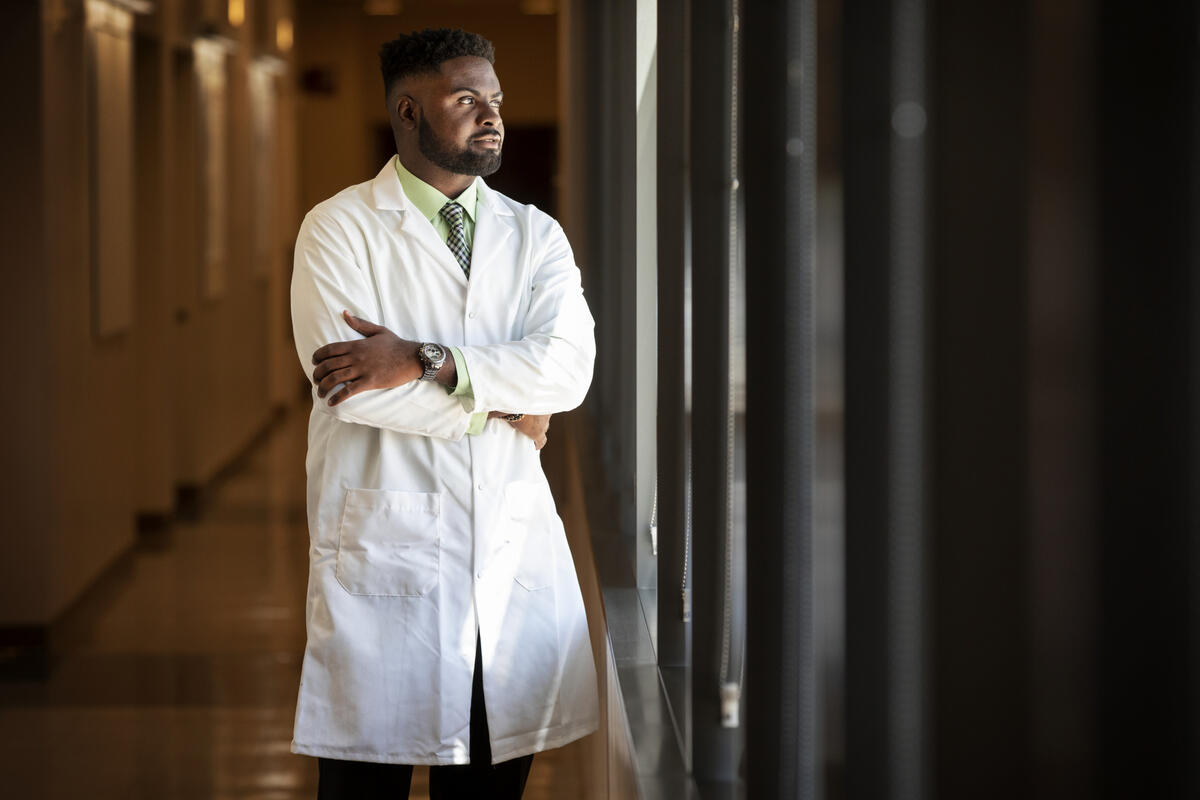Some students pick their colleges based on location. Some choose based on cost, while others decide based on the campus vibe.
Mechanical engineering senior Isaiah Henry chose UNLV because of the sheer volume of research opportunities and resources that would be available to him as an undergraduate.
As part of the McNair Scholars Program, he’s been conducting research since his sophomore year alongside faculty from the math and mechanical engineering departments. He worked with UNLV mechanical engineering professor Shubhra Bansal for his 2018 McNair project, which was also supported by an Asian American and Native American Pacific Islander-Serving Institutions grant and Louis Stokes Alliance for Minority Participation funding.
Henry worked on developing a more stable perovskite phase for solar cells using a cesium lead bromide composition. Don’t know what that means? Here, Henry shares his elevator pitch for laypeople.
I first heard about the McNair while I was an Upward Bound student in high school. I knew as soon as I learned about it that I wanted to be a McNair Scholar. So when I became a sophomore and was eligible, I applied.
I’d been reading a few papers on photovoltaic research — that is, using solar cells to generate electric power — and became very interested. I was enrolled in Dr. Bansal’s Structure and Properties of Solids course, which piqued my overall interest in material sciences. I approached her about being my faculty mentor, and she brought me into the fold of her Center for Energy Research group.
My work there has focused on developing a more stable light absorption phase for solar cells using a chemical composition of cesium lead bromide. All solar cells use a semiconductor to absorb light and generate electricity. Silicon has typically been used as the semiconductor material in the past, but now a perovskite material is being used more often because it is relatively inexpensive. A perovskite material is, simply, a crystal structure. The perovskite I’m testing is made of the chemical composition CsPbBr3 (cesium lead bromide), which is just one of many different perovskite compositions researchers are investigating to see which ones lead to solar cells that are more efficient at absorbing light.
The amount of useful energy we are able to get out of solar cells depends on the amount of light the perovskite layer is able to absorb, so the development of the perovskite phase is incredibly important if we’re going to make solar cells more efficient.
That’s my elevator pitch, anyway. I’m still practicing it!
Learning how to navigate a research environment has been the best part of the McNair experience. Having weekly goals and presenting updates helped me gain confidence in making technical presentations and explaining terms like “perovskite phase” to others. I’m able to have conversations with a diverse educational pool. Our team is composed of masters students, Ph.D. candidates, and postdocs, all working on a variety of projects.
Being in this environment as an undergraduate, I feel that I’m better prepared for graduate school and have a clear idea of what it takes to be successful there.
The McNair Program is one of the few programs in the country that consistently produces impactful research projects by undergraduate students. My research efforts as an undergraduate are being taken seriously. The program also provides a great starting point for connecting with professors, even if all you have is an interest in getting research exposure. It’s very good at using its network of faculty mentors to identify projects that students can be a part of.
The McNair Program is truly special to me. The research experience and graduate school preparation I’ve gained through it is invaluable. And being part of Dr. Bansal’s research group helps me see where the field is heading.



